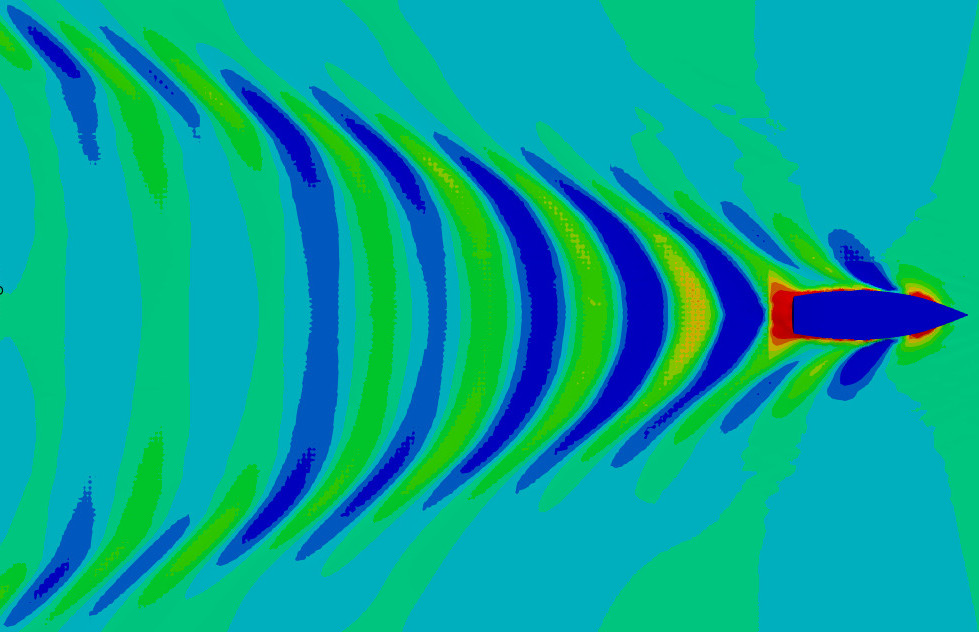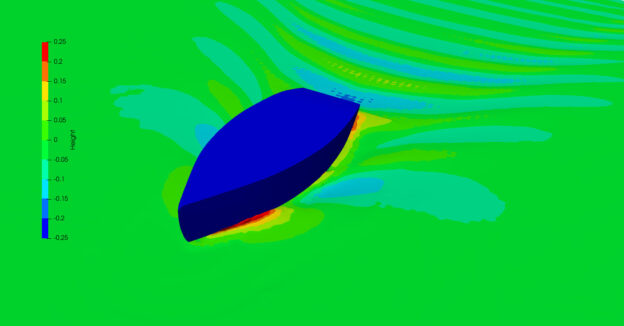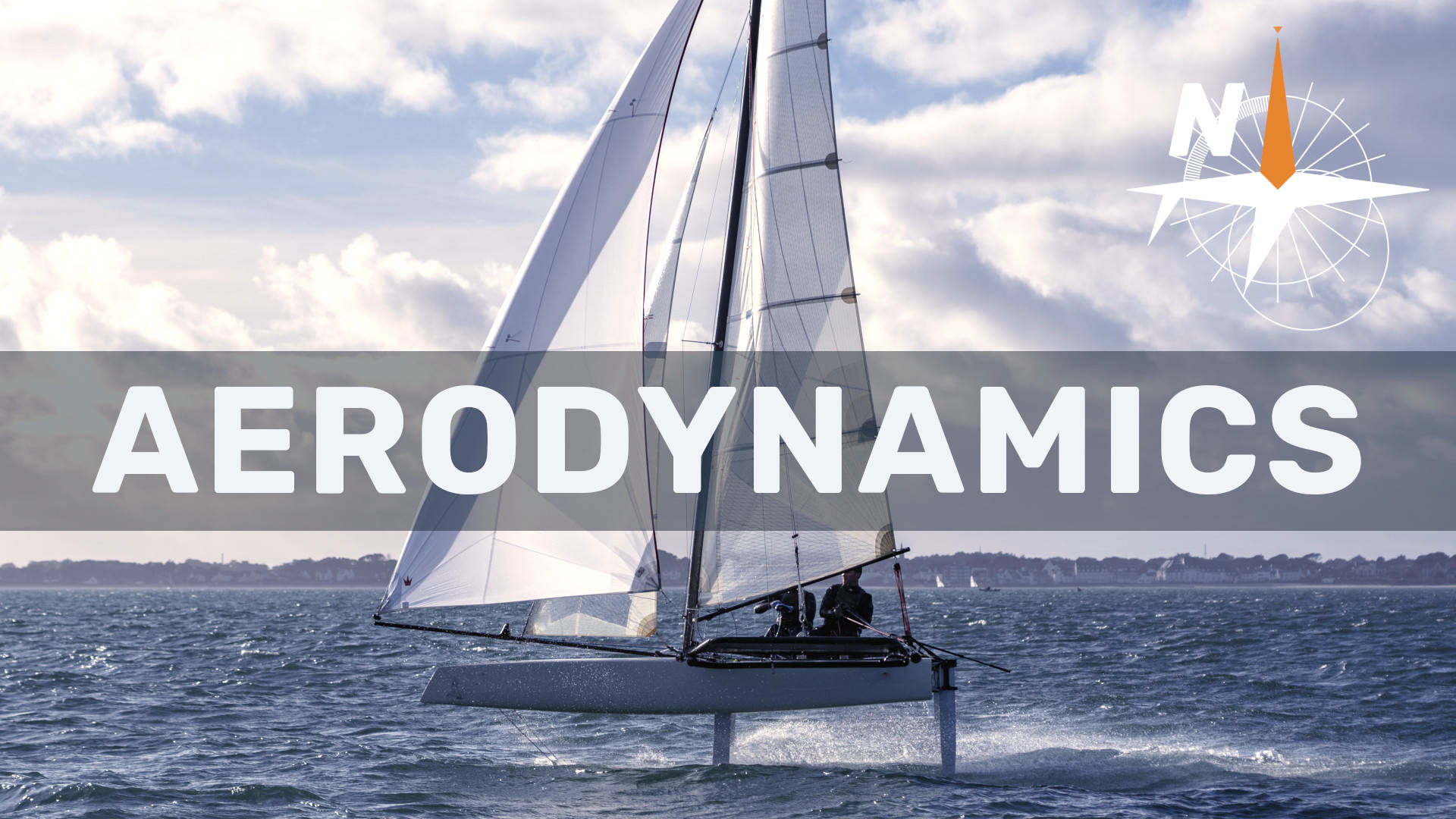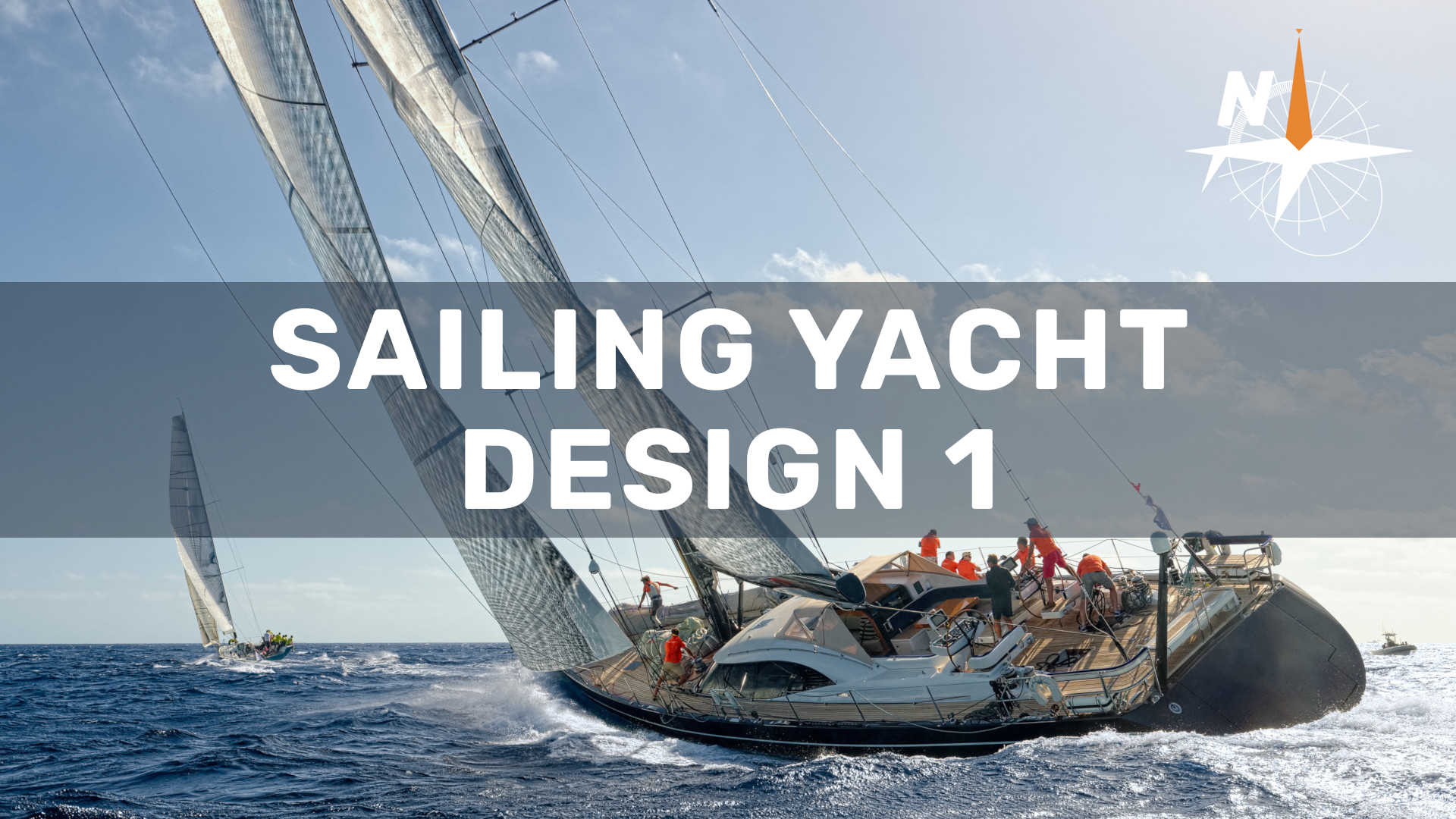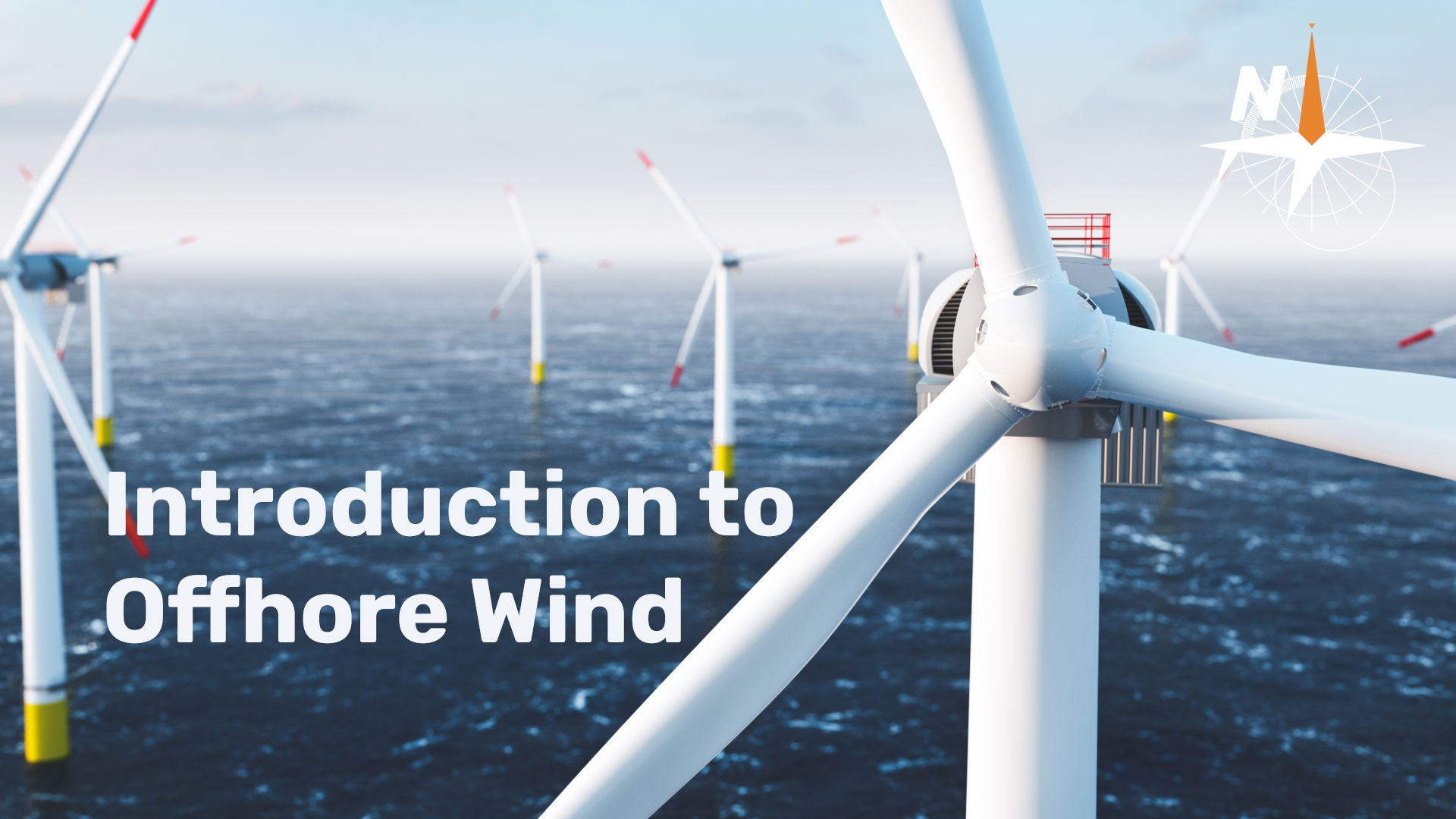Welcome!
Welcome to the CFD for Yachts course!
CFD simulations are currently becoming an essential step in the design of vessels, as they help to improve the resistance prediction and optimize the performance by analyzing different design options and determining what the best configuration would be in terms of shape and location of elements such as hulls, appendages, etc.
Computational Fluid Dynamics (CFD) can be defined as a discipline that solves fluid mechanics problems through computational techniques. Indeed, the term fluid dynamics refers to the motion of fluids and the forces on them, and the term computational means that such motion and forces are solved by numerical methods aided typically by a computer.
Even though CFD analyses are usually not carried out in the first steps of the design spiral, they are becoming ubiquitous at an advanced phase. In fact, CFD has become a crucial tool in designing vessels, allowing for obtaining robust conclusions without the need to perform expensive experimental campaigns.
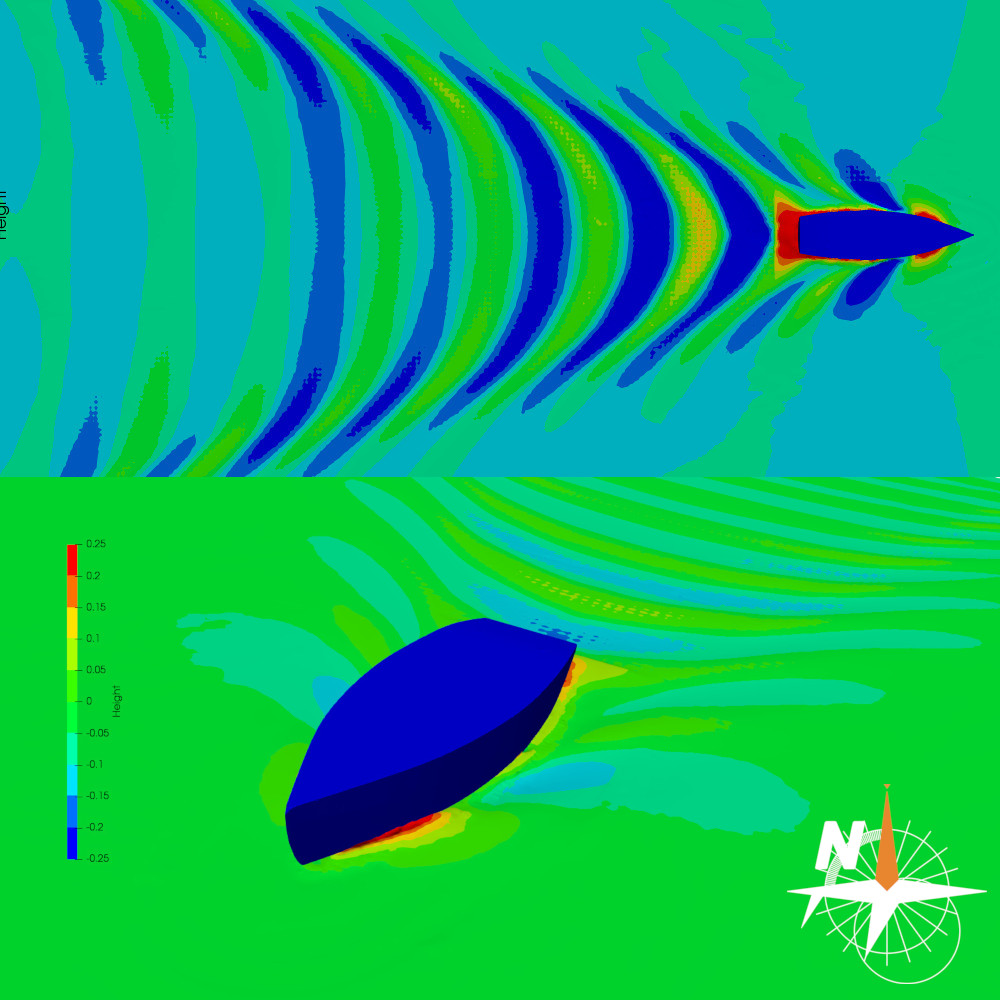
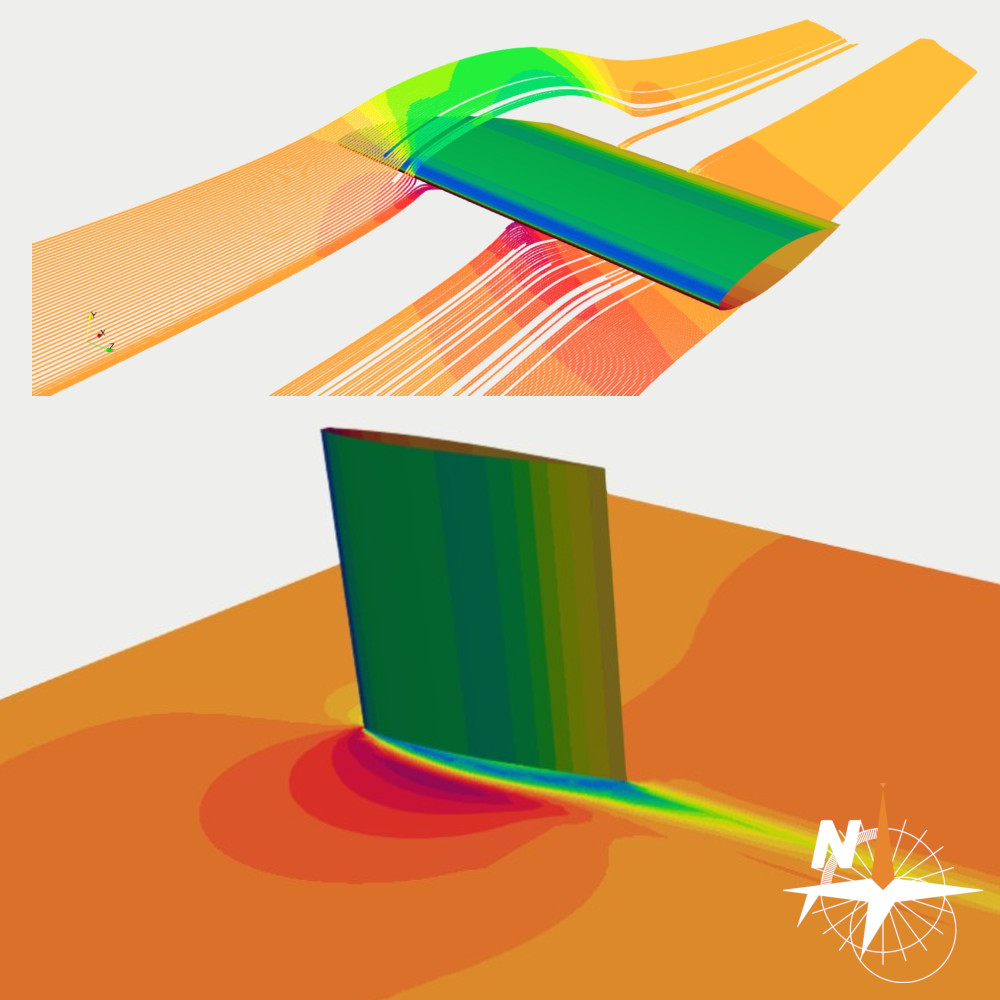
The course
This course equips the Students with the knowledge and tools required to understand and perform Computational Fluid Dynamics with the open-source and free CFD software OpenFOAM.
It includes extensive theoretical explanations of hull resistance and the physics of lift generation in hydrodynamics profiles, both being two canonical CFD cases that will be treated in detail. On top of that, the mathematical theories explaining the Finite Volume Method will be presented and verified in a simple example, the first application case to be performed by the Student.
The course is divided into three parts:
- In Part 1, an introduction to Computational Fluid Dynamics is presented. The process of carrying out CFD simulations will be explained, with a particular emphasis on naval applications. We will also dive into the equations that rule fluid dynamics through a simple example that will be used to present OpenFOAM.
- Part 2 explains the basic elements needed to carry out a CFD simulation with OpenFOAM. It will be applied to the case of a NACA profile, which is a widely used section in Naval Architecture: it can be found in rudders, keels, hydrofoils, or even propellers.
- In Part 3, a 3D simulation of a yacht will be carried out, explaining the different features critical to obtaining satisfactory results and having a deep discussion on the different results that can be extracted from an analysis of this kind.
The course provides the set-up of the different cases included.
What will you learn?
By completing this course, you will be able to carry out CFD simulations for different naval applications with the open-source software OpenFOAM. Speaking more precisely, you will be able to:
- Understand the fundamentals of CFD that are behind the results that are obtained.
- Understand the fundamental equations that rule fluid dynamics in general and, in particular, fluid dynamic simulations.
- Understand the fundamentals of the Finite Volume Method (FVM), which is used in many fluid dynamic software, like OpenFOAM.
- Understand the physics behind lift force generation in hydrodynamic profiles and the implications when simulating these phenomena using CFD.
- Understand the fundamentals behind ship resistance, as well as identify its different components based on their different nature: viscous resistance vs wave resistance. Also, you will understand the implications that these considerations have when simulating ship resistance with CFD.
- Understand the process of setting up a CFD simulation, including the meshing, definition of boundary, and initial conditions and numerical parameters that are needed.
- Obtain, using the CFD tool OpenFOAM, the resistance for both 2D and 3D objects, either submerged or in the presence of a free surface.
- Analyse the results that can be obtained from a CFD simulation through ParaView and other tools to process data.
Course organization
The course is video-based and on-demand and can be followed at your own pace.
It contains videos, quizzes, and downloadable documents and gives you access to the course’s virtual private classroom, where you can interact with the instructor and fellow students.
Students completing the course will obtain the Course Certificate. To obtain the Course Certificate, Students must finish all the lessons, pass the quizzes, and approve the Course Assignment.
– Resources:
- Video lessons.
- Video captions in English and Spanish.
- Written materials (160 pages).
- OpenFOAM installation files.
- All the files required to run each case.
- Quizzes.
- Final Assignment.
- Access to the Virtual Private Classroom.
- Course Certificate.
– Classroom:
– Prerequisites:
- To follow the course, it is not necessary to have any prior knowledge of Computational Fluid Dynamics. However, a technical or engineering background will help you during the journey. Also, a basic background in physics and mathematical concepts is assumed.
- A minimum Navalapp membership level of “Subscriber” (free membership) is required to enroll in this course.
RINA Endorsement
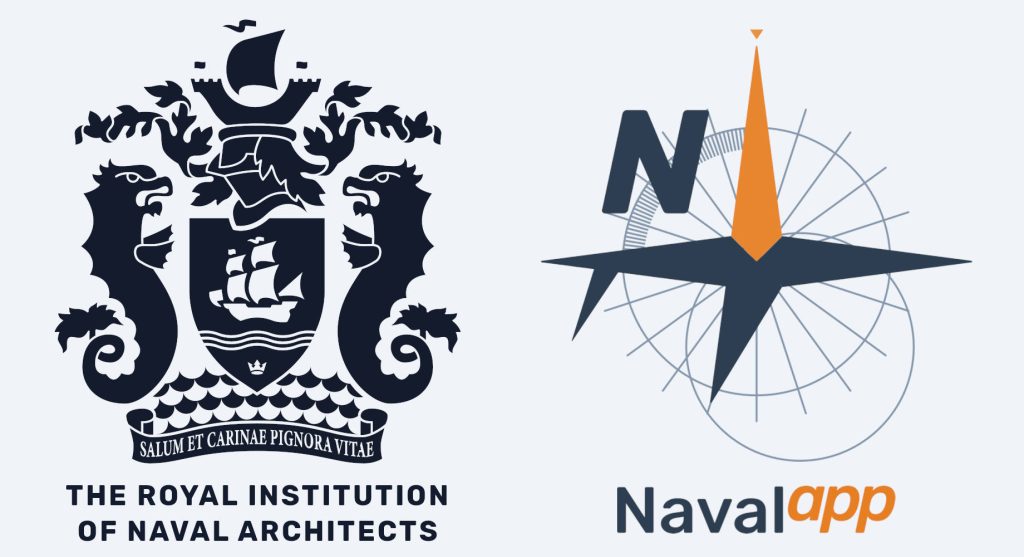
After a thorough evaluation, the Royal Institution of Naval Architects (RINA) has found that Navalapp’s course CFD for Yachts meets the Institution’s requirements for Continuing Professional Development (CPD). Therefore, RINA has considered that the course warrants recognition and has issued a Certificate of Endorsement.
During the evaluation, RINA studied different aspects of the course, such as learning aims, content and structure, whether the information is up-to-date and factually correct, students’ evaluations of the course, the supporting information and materials, the instructor’s expertise, the method by which the students are evaluated, and Navalapp’s organization standards.


